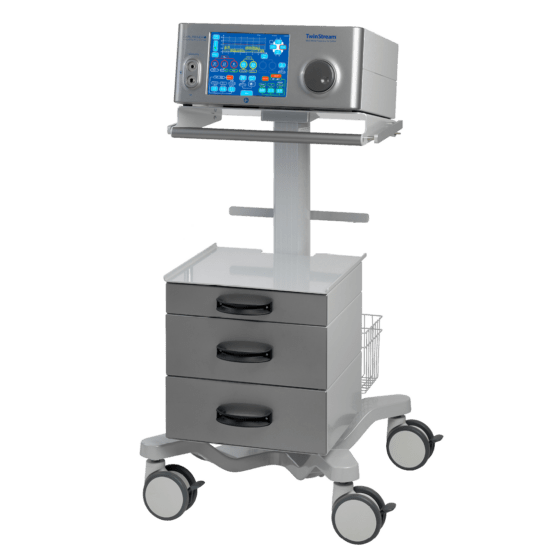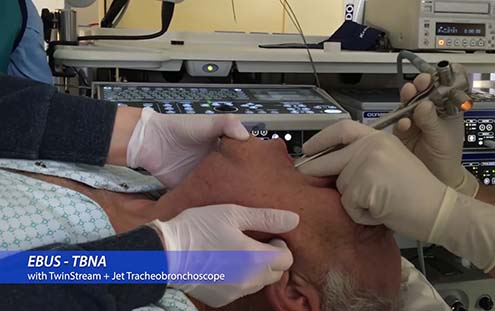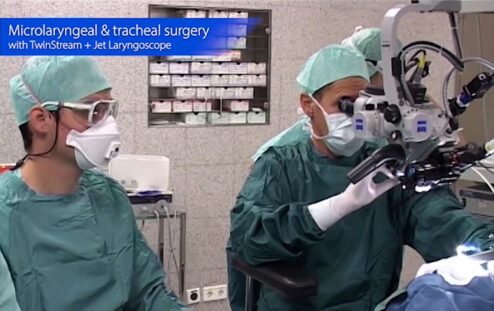TwinStreamTM jet ventilator:
Shared airway procedures
The TwinStreamTM jet ventilator provides an unparalleled solution for procedures in a shared airway, when both surgeon and anaesthetist require access to the same upper airway (Otolaryngology) or lower airway (Interventional pulmonology and Thoracic surgery). With over a decade of clinical use, the TwinStreamTM has proven itself an invaluable asset in numerous university hospitals across the European continent.
'Superimposed' HFJV
Its unique combination of high-frequency (50-1500/min) and low-frequency ventilation (1-100/min) provides both optimal oxygenation and efficient CO2 elimination at the same time. This is why Superimposed High-Frequency Jet Ventilation (S-HFJVTM) can be used without any time limit.
Reduced respiratory motion
The TwinStreamTM jet ventilator can also provide HFJV to a conventionally intubated patient. The Jet Converter connects to any ETT or LMA. This allows the use of HFJV for the purpose of reducing any respiratory motion to a minimum during procedures in radiology, cardiology or even urology.
TwinStreamTM configurations:
Single jet (HFJV):
- High-frequency jet ventilation
- Fully accessible airway
- Superior oxygenation
- 1/2-lumen Jet Catheters
- PP monitoring
- Gas monitoring in airway
- Laser Safe Mode (LSM)
- Automatic pressure alarm
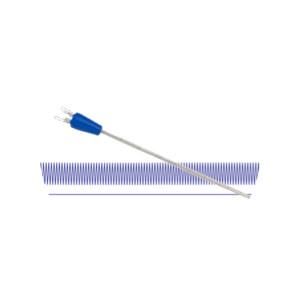
Double jet (S-HFJVTM):
- High-frequency jet ventilation
- Low-frequency jet ventilation
- Fully accessible airway
- Superior oxygenation
- CO2 elimination
- Customised jet endoscopes
- 3/4-lumen Jet Catheters
- PIP, PEEP, MAP monitoring
- Gas monitoring in airway
- Laser Safe Mode (LSM)
- Automatic pressure alarm
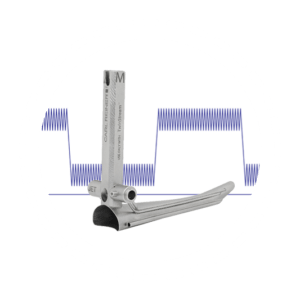
Shared airway procedures:
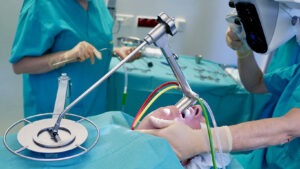
Laryngology
Infraglottic jet ventilation allows for laryngotracheal surgery (e.g. tumor resection, polyp removal, cyst removal, etc.) by means of a thin (laser-resistant) Jet Catheter, ranging from 1 to 4 lumens (OD 2.7 - 6.6 mm).
Tubeless supraglottic jet ventilation allows for optimal laryngotracheal surgery without endotracheal tube or Jet Catheter restricting the surgeon’s view and access.
Even a challenging (sub)glottic stenosis can easily be treated supraglottically.
Laser Safe Mode (LSM) reduces the oxygen concentration in the airway down to the exact desired level to avoid any risk of airway fires.
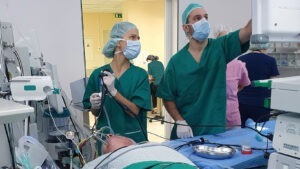
Pulmonology
A Jet Bronchoscope, Jet Tracheobronchoscope or Jet Tracheoscope comes with integrated channels for double jet ventilation, airway pressure monitoring and gas monitoring.
At the same time an 'open' jet endoscope provides optimal airway accessibility for a wide array of shared airway procedures such as e.g.:
• rigid bronchoscopy
• foreign bodies
• airway bleeding
• EBUS-TBNA
• argon plasma coagulation
• cryotherapy
• stent placement
• recanalisation
• laser surgery

Thoracic surgery
Several different types of Jet Catheters, ranging from 1 to 4 lumens, allow for shared airway procedures such as e.g. various resections (trachea, carina, pleura, lobe or lung).
A combination of Jet Converter and Jet Catheter allows switching from a wide endotracheal tube to a tiny Jet Catheter and back. During e.g. a tracheal resection this provides the surgeon with optimal working space when required.
During Single-Lung Ventilation the Jet Converter connects to a Double-Lumen Tube to gently ventilate the operated lung. HFJV provides optimal oxygenation, while its frequency range (up to 1500/min) reduces any lung motion to an absolute minimum.
Reduced respiratory motion:
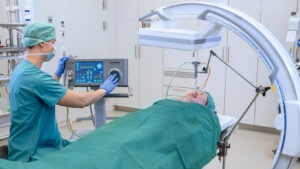
Radiology
During tumour ablation the exact targeting of the tumour is essential for the accuracy of the therapeutic effect, as well as to avoid collateral damage of healthy tissue.
High-Frequency Jet Ventilation (HFJV) can attain a frequency as high as 1500/min, effectively reducing the respiratory motion to virtually nothing.
The optional 'Pulse' button can even take it one step further and completely exclude all respiratory motion, creating a completely still thoraco-abdominal environment.
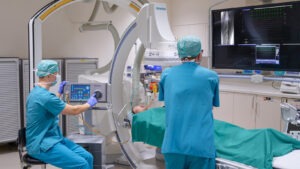
Cardiology
During treatment of cardiac arrhythmia by means of radiofrequency ablation (RFA) the stability of the contact force between catheter tip and cardiac tissue is of crucial importance.
High-Frequency Jet Ventilation (HFJV) can reduce the respiratory motion to virtually nothing. As a result HFJV is known to improve the contact force by up to 75% compared to conventional ventilation.
The optional 'Pulse' button can even take it one step further and completely exclude all respiratory motion, creating a completely still working environment in the thorax.
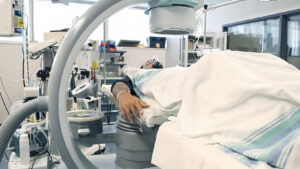
Urology
During kidney stone treatment by means of shock wave lithotripsy the accuracy of the stone targeting can be increased by means of High-Frequency Jet Ventilation.
HFJV can attain a frequency as high as 1500/min, effectively reducing the respiratory motion to virtually nothing.
The optional 'Pulse' button can even take it one step further and completely exclude all respiratory motion, creating a completely still working environment in the abdomen.
TwinStreamTM videos:
TwinStreamTM accessories:
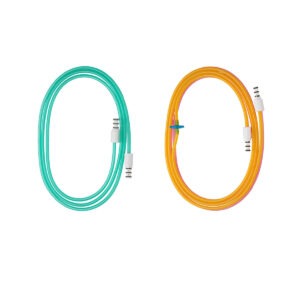
Disposable tubing
EasyConnectTM to EasyConnectTM
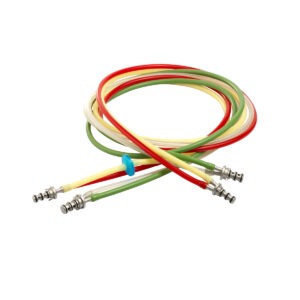
Reusable tubing
EasyConnectTM to EasyConnectTM
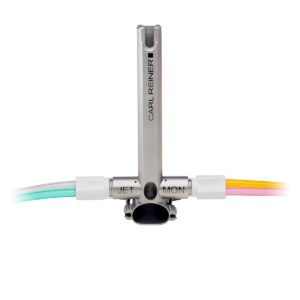
Jet Laryngoscope
Integrated ventilation & monitoring
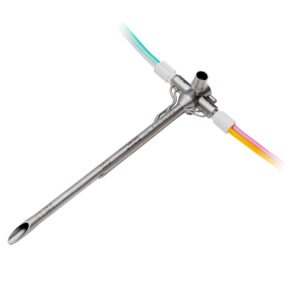
Jet Bronchoscope
Integrated ventilation & monitoring
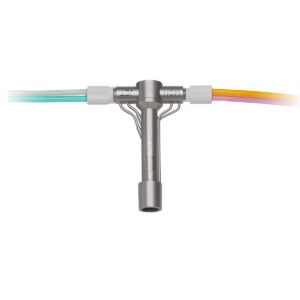
Jet Converter
Integrated ventilation & monitoring
- Address: Mariannengasse 17, 1090 Vienna
- Phone number: +43 1 402 62 51 0


